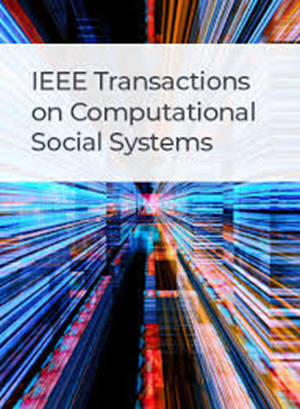个性化产品描述生成与门控指针发电机变压器
IF 4.5
2区 计算机科学
Q1 COMPUTER SCIENCE, CYBERNETICS
IEEE Transactions on Computational Social Systems
Pub Date : 2024-09-27
DOI:10.1109/TCSS.2024.3396840
引用次数: 0
摘要
在电子商务领域,网上购物已成为日常生活的主要内容,个性化产品描述的产生为增强客户体验带来了独特的挑战和机遇。传统的零售互动允许销售人员和客户之间的个性化沟通,确保直接满足消费者的需求。这种程度的个性化很难在网上实现,因为消费者必须浏览通用的、通常很长的产品描述,才能做出明智的购买决定。认识到根据个人偏好个性化内容的双重必要性,同时确保描述忠实于产品的核心属性,本文介绍了一种新颖的方法,即门控指针发生器变压器(GPGT)。该框架旨在弥合客户偏好和产品特性之间的差距,使描述的生成不仅能够根据用户的兴趣进行定制-例如为时尚前卫的个人强调外观或为技术爱好者强调功能-而且还能准确反映产品的独特品质,包括品牌名称和技术规格。GPGT利用结合了Transformer编码器的选择注意机制来捕捉用户属性和产品特性之间细微的交互,并在解码阶段通过复制机制进一步细化,以精确包含特定的产品相关术语。大量的实验表明,我们的框架大大提高了生成质量(ROUGE-2为$+$10.6%,BLEU为$+$15.9%),同时更忠实地吸引人们的注意力。在流利度、忠实度和个性化方面的人类评价结果也表明,GPGT生成的描述更能被真实用户所接受。本文章由计算机程序翻译,如有差异,请以英文原文为准。
Personalized Product Description Generation With Gated Pointer-Generator Transformer
In the realm of e-commerce, where online shopping has become a staple of daily life, the generation of personalized product descriptions presents a unique challenge and opportunity for enhancing customer experience. Traditional retail interactions allow for personalized communication between salespersons and customers, ensuring that consumer needs are directly addressed. This level of personalization is harder to achieve online, where customers must navigate through generic, often lengthy product descriptions to make informed purchasing decisions. Recognizing the dual necessity of personalizing content to individual preferences while ensuring the descriptions remain faithful to the product's core attributes, this article introduces a novel approach, the gated pointer-generator transformer (GPGT). This framework is designed to bridge the gap between customer preferences and product features, enabling the generation of descriptions that are not only customized to the user's interests—such as emphasizing appearance for fashion-forward individuals or functionality for tech enthusiasts—but also accurately reflect the product's distinctive qualities, including brand names and technical specifications. GPGT leverages the select-attention mechanism combined with a Transformer encoder to capture the nuanced interactions between user attributes and product features, further refined by a copy mechanism during the decoding phase for the precise inclusion of specific product-related terms. Extensive experiments show that our framework substantially improves the quality of generation ($+$ $+$
求助全文
通过发布文献求助,成功后即可免费获取论文全文。
去求助
来源期刊

IEEE Transactions on Computational Social Systems
Social Sciences-Social Sciences (miscellaneous)
CiteScore
10.00
自引率
20.00%
发文量
316
期刊介绍:
IEEE Transactions on Computational Social Systems focuses on such topics as modeling, simulation, analysis and understanding of social systems from the quantitative and/or computational perspective. "Systems" include man-man, man-machine and machine-machine organizations and adversarial situations as well as social media structures and their dynamics. More specifically, the proposed transactions publishes articles on modeling the dynamics of social systems, methodologies for incorporating and representing socio-cultural and behavioral aspects in computational modeling, analysis of social system behavior and structure, and paradigms for social systems modeling and simulation. The journal also features articles on social network dynamics, social intelligence and cognition, social systems design and architectures, socio-cultural modeling and representation, and computational behavior modeling, and their applications.
 求助内容:
求助内容: 应助结果提醒方式:
应助结果提醒方式:


